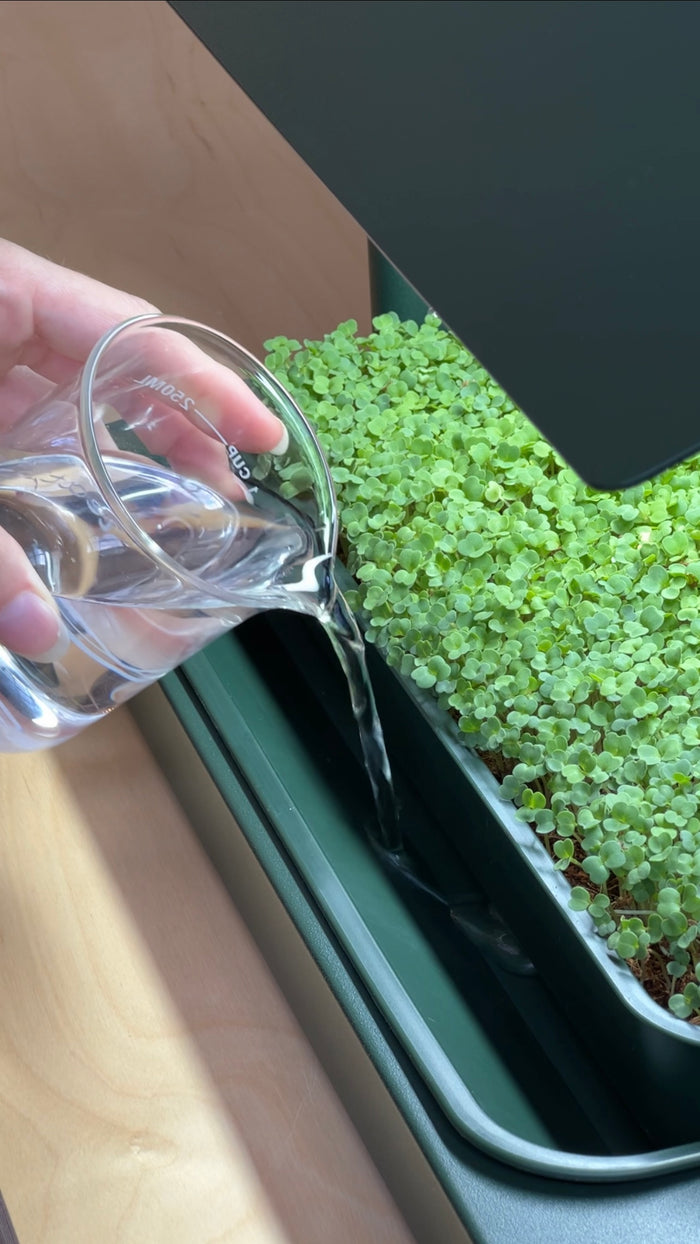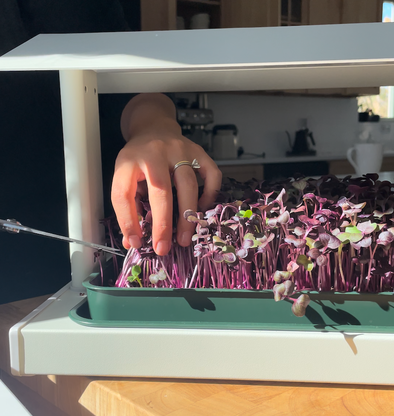
Okay it’s obvious that watering your greens is super important. But when and how much are two key questions that’ll substantially impact your harvests. Here’s your guide to master that skill.
We tend to look at the microgreen watering schedule in two different stages:
- The germination phase — during initial sprouting, microgreens are covered by the germination lid
- The growth stage — microgreens are uncovered and exposed to light
Let’s talk about each of these in detail.
GERMINATION PHASE
Seeds enter the germination phase immediately after they are planted. During this phase, the outside seed hull opens, and the seeds begin to form their root structures. Moisture helps the seed hulls to split open, which is essential. One main source of water in this phase actually comes from the rehydrated coir. In combination with the germination lid, the coir grow medium provides an optimal environment that meet the needs of newly sown seeds.
Early on, seeds will also really benefit from a top misting — which is why we included a handy spray bottle with every Fieldhouse order. This helps keep the seeds moist, and to speed up the germination process. Some seeds enjoy more frequent misting than others, so please reference our individual growing guides for seed specific information.
During the germination phase, we do not want to bottom water. Seeds have yet to develop roots to suck up water at this point, and bottom watering at this phase would only oversaturate the grow medium.
GROWTH PHASE
After 2 - 3 days, your seeds are now good to be uncovered and the lights are ready to be switched on. The growth stage marks the point where bottom watering begins, as the roots have grown and are able to consume more water.
The general rule of thumb is 1 cup of water (250 ml) per day — starting when you first uncover the seeds. We say general because certain seeds like more water than others, and conditions can also greatly vary between different homes. If you live in a hotter climate — you can expect for your seeds to absorb water at a quicker rate. Colder climates typically mean less frequent watering.
To know if and when to water your seeds, it’s helpful to look at the coir grow medium. If the coir is visibly saturated or dark brown in color, it’s safe to wait another day to water. If on the other hand the coir has begun to dry out and looks arid, it’s probably a good time to water. Check out the video to see what this looks like in practice.



















